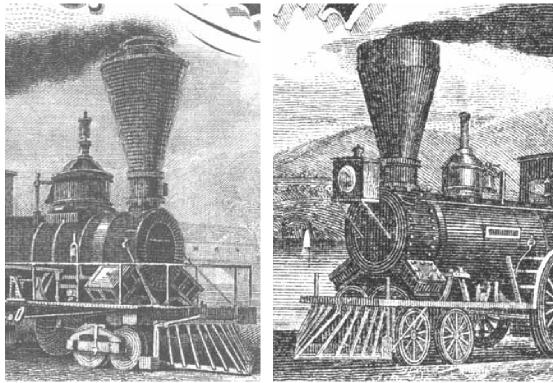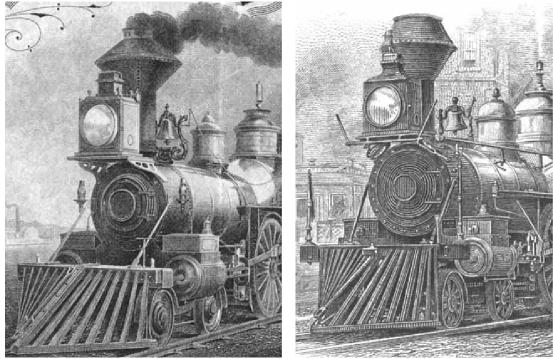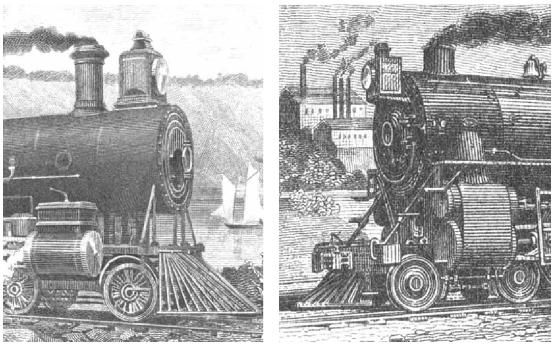
Preserving certificates: acidity in paper
Practically all my correspondents recognize the importance of protecting their certificates with high-quality holders. Good holders are terribly important. By themselves, however, even the best holders won’t stop acid deterioration.
It is crucial to understand something about acid in paper and mitigate its movement. Let’s start with the paper itself.
All sorts of plant fibers can be used to make paper. Long fibers, such as cotton, make excellent, durable papers. Paper made from cotton (or cotton rags) is soft, durable, easily cut, withstands printing pressures, and holds ink firmly. Unfortunately, plants like cotton grow well only in limited regions, so growing and transportation costs are high.
Around the middle 1800s, inventors discovered they could combine acid with mechanical maceration to efficiently recover fibers from wood. That new technology created a vast source of fibers. Trees grow all over the planet, so the cost of acquiring and transporting wood fibers is dramatically lower than cotton fibers.
 Large “balloon” and funnel stacks indicate these locomotives were wood-burners.
Large “balloon” and funnel stacks indicate these locomotives were wood-burners.
Paper made from wood fibers works well, although the fibers are shorter and less durable than cotton. Wood pulp paper holds ink well and that, of course, is the primary purpose of paper.
If not removed or neutralized, the very acid used to free wood fibers will ultimately destroy the paper made from the pulp. It is an expensive process and the more acid removed, the higher the cost.
Of all collectible paper items, newspapers are among the most ephemeral. They are only meant to be read once or twice and then discarded. Consequently, printers use extremely cheap paper. As you can imagine, newsprint (the paper used to make newspapers) is highly acidic.
Newsprint is so acidic that if you leave a newspaper in the sun, the paper will quickly turn yellow. We have less atmosphere above of us here in Colorado, so newspapers turn noticeably yellow after only two to three hours exposure. Given sufficient time, chemical reactions of the trapped acid will continue until the paper disintegrates.
Chemical reactions are temperature-dependent. Cool temperatures slow reactions. High temperatures accelerate them. This means that if you do nothing else, keep your certificates cool and away from the sun.
210 New varieties of certificates since March
|
March
letter |
This
letter |
| Number of certificates listed (counting all variants of issued, specimens, etc.) |
21,873 |
22,140 |
| Number of distinct certificates known |
16,565 |
16,775 |
| Number of certificates with celebrity autographs |
1,646 |
1,646 |
| Number of celebrity autographs known |
343 |
343 |
| Number of railroads and railroad-related companies known |
25,411 |
24,493 |
| Number of companies for which at least one certificate is known |
6,949 |
7,016 |
| Serial numbers records |
78,521 |
80,226 |
Problematically, wood pulp paper ages all on its own, even when kept completely away from sunlight and heat. Researchers at the Library of Congress have discovered that as cellulose ages, it generates its own acid by¬products, including formic, acetic, lactic, and oxalic acids. They further discovered that even acid-free papers made from cellulose become increasingly acidic as they age!
Acid can be removed from wood pulp by treating it with alkaline chemicals, the chemical opposites of acids. Finely-ground limestone is a perfect alkaline additive.
Clean limestone is almost pure calcium carbonate. It neutralizes acid quickly and cheaply. (If you ever chew Tums® tablets to control stomach acid, you are eating finely-ground calcium carbonate.)
To further protect against acid deterioration, paper can be “buffered” by adding surplus alkaline to the pulp. Obviously, buffered papers are even more expensive.
If manufacturers actually go to the expense of removing acid, they proudly label their papers as “acid-free” or “buffered.” Warning #1: Paper not specifically labeled that way is neither buffered nor acid-free.
 Locomotive stacks (or chimneys) were highly variable, more indicative of the country through which they traveled than the builder. Stacks were highly experimental. Companies employed many different schemes in an effort to catch burning embers before they caught forests, grasslands, or buildings on fire. The loco on the left displays a very typical “diamond” stack. The design on the right is modified and is similar to one called a “Congden” stack.
Locomotive stacks (or chimneys) were highly variable, more indicative of the country through which they traveled than the builder. Stacks were highly experimental. Companies employed many different schemes in an effort to catch burning embers before they caught forests, grasslands, or buildings on fire. The loco on the left displays a very typical “diamond” stack. The design on the right is modified and is similar to one called a “Congden” stack.
American Bank Note Company printed certificates on high quality, high cotton fiber paper. ABN was obsessed with paper quality and its certificates rarely show acid deterioration.
If you look long enough, though, you can find a few ABN certificates that have turned brownish and brittle even though they were printed on the same paper. What happened?
As mentioned before, cellulose products (including cotton) can evolve acid by-products with age and aging is vastly accelerated by sunlight. Unless you are willing to accept the sacrifice, NEVER frame a valuable certificate.
Most deterioration that takes place away from the sun, however, is probably caused by acid that migrates from nearby folders, envelopes, and certificates. Acid is highly mobile, much enhanced by humidity, sunlight, and heat.
While avoiding a long, involved chemistry lecture, I want to stress that acid will move from any acidic piece of paper to any piece of paper of lower acidity.
Test this for yourself. Place a piece of ordinary copy paper within a stack of newspapers. Depending on heat and humidity, you will notice that the acidic newsprint will start to yellow the copy paper within a few months.
Acid mobility is a serious consideration when storing paper. I want you to be alarmed, paranoid, and worried about acid deterioration. If you allow acidic paper anywhere near a certificate, the certificate will eventually suffer acid damage.
 It is way too late to mitigate acid damage for this scarce certificate. This is the destiny for certificates printed on wood pulp paper if acid deterioration continues unimpeded. This certificate is barely toned, but is so brittle, cracked and fragile that I can’t even handle it.
It is way too late to mitigate acid damage for this scarce certificate. This is the destiny for certificates printed on wood pulp paper if acid deterioration continues unimpeded. This certificate is barely toned, but is so brittle, cracked and fragile that I can’t even handle it.
No, not immediately. Damage may take a couple decades to become noticeable, but by that time, it is much too late. Acid damage is ongoing and cumulative. You can be sure that owners before you did nothing. Why not do your part to preserve your collectibles?
Many collectors tell me they store two certificates in one mylar holder with a piece of black paper between. If the black paper contains acid, their certificates will eventually suffer damage. I am not saying to avoid black paper. I am saying to use “acid-free” or “buffered” paper only. Warning #2: If paper is not specifically labeled “acid-free”, it is not.
Research proves that acid transfer does not require direct contact. Acid will move within any closed space (box, holder, file drawer). Fortunately, the greater the distance between acidic and non-acidic papers, the less acid transfer. Ventilation helps dramatically. (This is why conservators question the wisdom of sealing all four sides of Mylar holders.)
Holders can slow down acid transfer, but they cannot stop it. Say you place a highly acidic newspaper and a nice certificate next to each other in separate Mylar holders. Given sufficient time, acid will migrate from the newspaper to the certificate. The acid is NOT going through the Mylar. It is migrating out of one holder and into the next.
What about ordinary manila folders? Or hanging files? Warning #3: If they are not specifically labeled “acid-free”, they are not.
Some years ago, I tested the acid content of every kind of paper I had in my office: manila folders, hanging files, typing paper, books, magazines, envelopes, etc.
Every single piece of paper I tested showed some acidity. Some was dramatically worse than others. At the time, the worst paper in my office was the soft black card stock used in typical photo albums.
 For descriptive purposes, I call these “mushroom” stacks. I suspect the loco on the left was probably burning coal. The loco on the right carries a large spark arrestor and was likely burning wood.
For descriptive purposes, I call these “mushroom” stacks. I suspect the loco on the left was probably burning coal. The loco on the right carries a large spark arrestor and was likely burning wood.
Hanging files and manila folders captured my attention, too. At that time, I was selling souvenir cards and I stored them in file cabinets. My files and folders were not highly acidic, but acidic nonetheless. Given sufficient time, they would have proven innocently deleterious to my inventory. (Souvenir card collectors beware! The white envelopes that hold cards are also weakly acidic.)
I beg you not to deceive yourself. Be careful of everything made of paper near your certificates – cardboard boxes, chipboard stiffeners, manila folders, envelopes, album pages, black separators. Warning #4: If any product is not specifically labeled “acid-free” or “buffered”, it is not. Yes, yes, I know. Acid-free and buffered paper products are horribly expensive. But still, if you are going to store precious certificates for years or decades, don’t you think caution is warranted?
Want to learn more? The Library of Congress web site is a great place to start. This page, http://www.loc.gov/ preserv/deterioratebrochure.html has an excellent paper titled: The Deterioration and Preservation of Paper: some essential facts.
Recording eBay prices – my process
About 6:30 every morning I locate all sales of railroad certificates that took place the previous day on eBay (US). I use a filter to find all sales of $24.50 and higher.
I record sales of all single items that take place in three categories where railroad certificates commonly sell. I ignore mis-categorized certificates that appear elsewhere. (They are too hard to find and, if they sell at all, they sell for such absurdly low amounts that it is not worth my time to record them.)
For certificates that sold the day before, I record prices rounded to nearest dollars, dates, serial numbers, shares, and celebrity signatures.
Inexperienced sellers rarely mention cancellations. If I cannot see cancellations, I assume certificates represent the most common variations. Generally, eBay buyers pay the same for cancelled and uncancelled items.
Later each day, I transfer all new information to the database. As I add data, I adjust price estimates up or down as warranted. Every week or two, I upload all new pricing information to the web site.
 Coal burners used straight stacks, occasionally with slightly flared sides. These two images suggest that the locomotive on the left burned a slightly different sized coal than the one on the right. I suspect the loco on the right burned somewhat smaller pieces of coal. More complete burning in the firebox would have limited the volume of still-burning embers exhausted through the stubby smokestack.
Coal burners used straight stacks, occasionally with slightly flared sides. These two images suggest that the locomotive on the left burned a slightly different sized coal than the one on the right. I suspect the loco on the right burned somewhat smaller pieces of coal. More complete burning in the firebox would have limited the volume of still-burning embers exhausted through the stubby smokestack.
You might argue that I miss many certificates because I only record sales above $24.50.
True. I miss a huge number, but I simply don’t have the time to record more than I already do.
You might also argue, again with justification, that I miss rare items that sell for less than $24.50 because sellers were uninformed, used poor photos, or did not know how to attract better bids.
True, again. But ask yourself. If genuinely rare items sell for less than $24.50, are prices realistic? Could any other collector ever hope to find another at such a low price?
Finally, some people might ask why I do not record items that are obviously valuable, but that go unsold on eBay.
My answer is to stress that my time is precious. I could spend every waking minute on this project and never run out of certificates to catalog. Time is why, unless people send them, I ignore unsold certificates that pass through eBay.
In taking the long view, I reason that if certificates are truly rare and valuable, they will reappear later. Maybe not right away. Maybe not for years. But sometime.
I prefer to keep perspective. Millions of certificates sold before I started this project and millions will sell after I’m gone. I simply fail to understand how not recording unsold eBay certificates will have any effect.